Last updated: March 2, 2017
Article
Buckeyes Bound for the Orient

Freer & Sackler Galleries, Smithsonian Institution
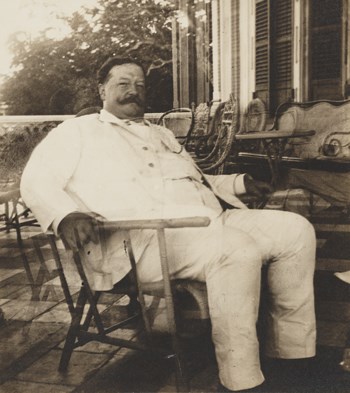
Library of Congress
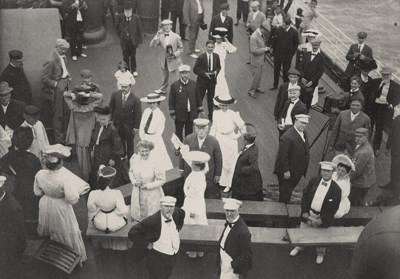
Freer & Sackler Galleries, Smithsonian Institution
The Journey
On July 4th, 1905, the delegation of eighty-two set off for their first stop, albeit a brief one, in Honolulu from San Francisco. It took them five days to cross the Pacific aboard the steam ship S.S. Manchuria. A large part of the time spent on the ship was posing for photographs set up by trip photographer Burr McIntosh. Alice Roosevelt wrote about the time spent posing for photographs, "We were all "taken" in big groups, in little groups, and singly, from morning to evening." The photos of McIntosh and Woods show what life was like for Americans who were afforded the luxury of travel in the early 20th century and also show the stark contrast from modern American culture to indigenous foreign cultures halfway around the world.
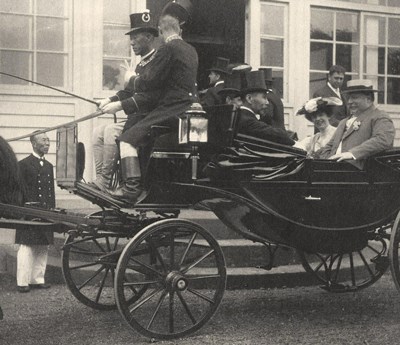
Freer & Sackler Galleries, Smithsonian Institution
The Far East
Japan
On July 25th, the Manchuria docked at Yokohama and the Taft delegation was greeted very warmly by their hosts. They were treated to several spectacles including a delayed showing of the Cherry Blossom Festival. After Taft was elected President in 1908, his wife, First Lady Nellie Taft, received a gift from Japan in the form of several cherry trees. Those trees can still be seen today in various locales throughout the Washington D.C. area. Although the trip to the Far East was touted as a goodwill diplomatic mission, it did have other, more important context. One of which was that President Roosevelt wanted Taft to negotiate territorial arrangements with the Japanese. Taft did manage to negotiate an acceptable deal with Japanese premier Taro Katsura and this deal helped Roosevelt broker the Treaty of Portsmouth, which ended the Russo-Japanese War of 1904-1905.
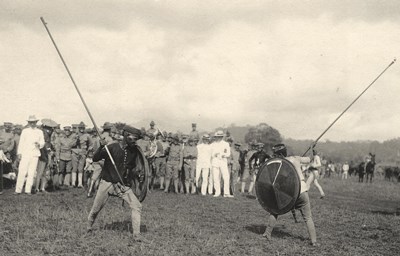
Freer & Sackler Galleries, Smithsonian Institution
The Philippines
On August 1st, with the goodwill and successful negotiations behind them, the delegation set off for Manila. Four days later they would arrive in the Philippines and be very warmly greeted by their hosts. Alice Roosevelt wrote of the Filipinos reaction to the return of Taft; “The Filipinos seemed united in their pleasure at seeing again the Secretary of War, their ex-Governor-General. He was greeted by everyone on all sides with extraordinary enthusiasm and affection and they laid themselves out to entertain him and his party. No one could have helped responding to their courtesy and hospitality.” The warm reception that Taft received upon his return is not surprising. During his tenure as Governor General he constructed schools, established infrastructure, improved sanitation and revised judicial codes. Taft sought to treat the Filipinos as equals and one of his goals as Governor General was to ensure that the Filipinos could self-govern after his tenure was over. After touring various parts of the Philippines for almost a month, the delegation wrapped up their stay in the country and departed on August 31st for Hong Kong.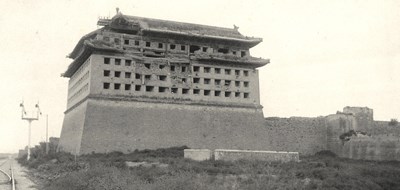
Freer & Sackler Galleries, Smithsonian Institution
The final leg of the Taft mission was China. Taft would only stay in China for a little less than two weeks, but his stay was an impactful one. He would also tend to negotiations with Chinese officials to address a new Chinese boycott of American imports. Roosevelt's dispatching of Taft to the Far East was seen as a strategic move for the U.S. The U.S. sought to expand trade into China and Manchuria but also had to deal with lingering tensions left over from the recent Boxer Rebellion. Taft was the perfect man to spearhead the American interests, hence the reason Roosevelt sent him to lead the diplomatic journey. When Taft took office as President in 1909, he was more agressive than Roosevelt when it came to U.S. foreign trade and pursued a program known as "dollar diplomacy." Ultimately though, Taft's ambitous new foreign policy would wind up being a failure as trade with China declined under his administration.
The Big Picture
The result of the Taft diplomatic trip to the Far East proved to be a success. With Taft serving as a mediary, Roosevelt was able to eventually broker a peace between the Japanese and the Russians who had recently gone to war over competing interests in Korea and Manchuria (Russo-Japanese War). As a result of the peace treaty Roosevelt constructed between the Russians and Japanese in Portsmouth, New Hampshire, he would earn the 1906 Nobel Peace Prize. Additionally, Taft and Roosevelt also were able to get Japan to not pursue any interest into the Philippines which the U.S. was already well embedded in. The diplomatic mission also showed that the U.S. was one of the prominent imperial powers of the world as well.
Additional Resources
Get a more detailed review of Taft's diplomatic trip to the far east when you visit Looking East, the website showcasing photographer Harry Fowler Woods's work and the 1905 mission. For interested teachers, there is also a Teacher's Manual with lesson plans to help you create engaging lessons for your students in the classroom.
Interested in seeing more Alice Roosevelt and what it was like for her on the journey to the Far East? Visit the Smithsonian website's Freer & Sackler gallery showcasing her trip. The Alice in Asia feature showcases official trip photographs with Miss Roosevelt as the centerpiece in many of them. The site also contains exerpts from her autobiography Crowded Hours, in which she describes some parts of the exotic getaway.
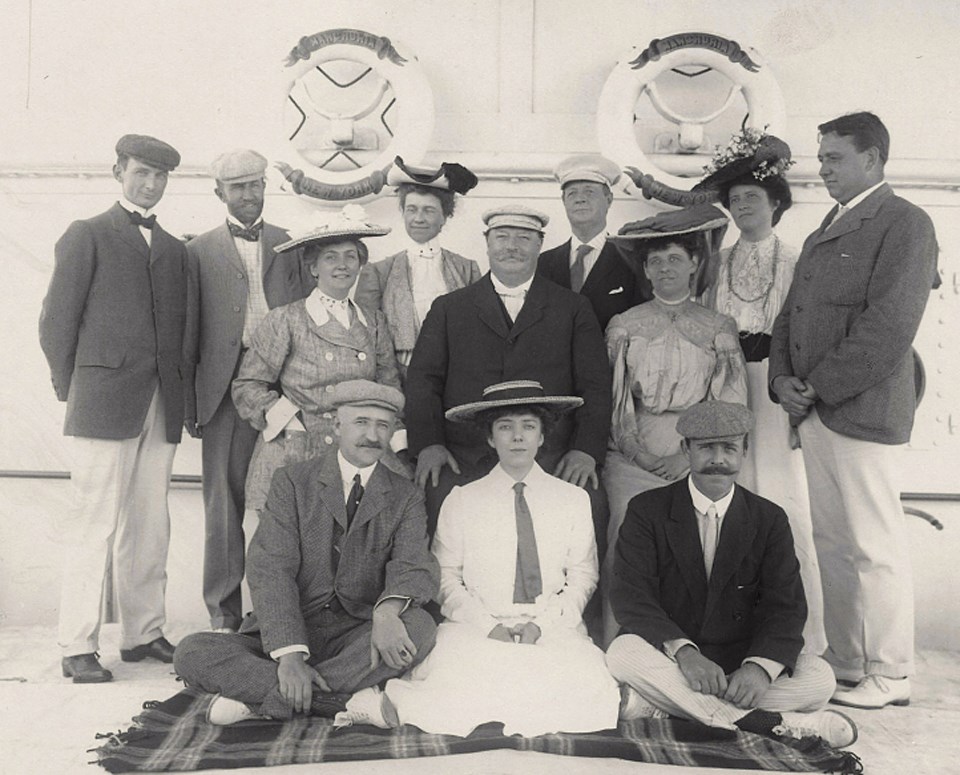
Freer & Sackler Galleries, Smithsonian Institution
